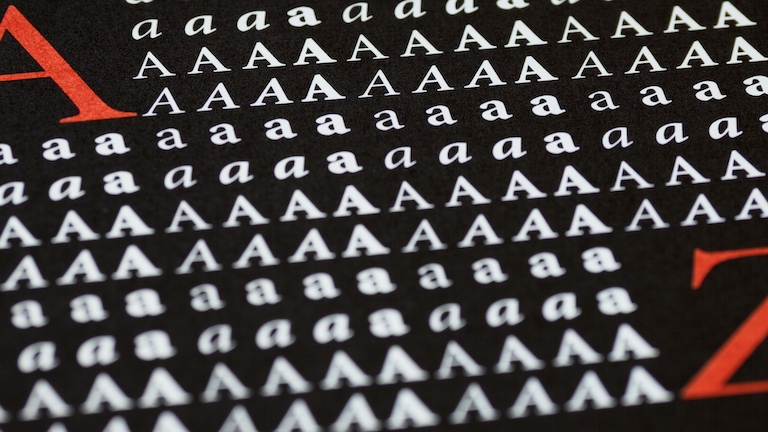
How to set up your UX copy ecosystem
Here’s how UX writers can build and manage a practical, scalable copy ecosystem without special apps or technical know-how
Author
UX copy is a dialogue between your product and its user. The interactions you have could be anything from a simple word or phrase to a longer conversation. The important thing to know is that your UX copy can have a profound and lasting effect on your users.
So how can we make sure that the conversations we’re having with our users are the right ones? It all starts with a UX copy ecosystem — your greatest asset for communicating with your customers.
Why you need a UX copy ecosystem
The most important and unglamorous reason why you need to create a UX copy ecosystem is to avoid rework, especially if you’re part of a team of UX writers. For example, you should only need to write a generic error message once. If you document and archive it in your ecosystem once it’s ready, other writers — as well as yourself — can easily find the error message and reuse it.
In fact, your UX copy ecosystem should be accessible to everyone on your team. Why? Because it could come in handy for developers looking for message strings, product designers creating conceptual work, or QAs needing a source of truth against which they can check a new feature.
A well-managed UX copy ecosystem will show you how your copy works across a brand-wide spectrum that goes beyond a single feature, product or even platform.
A well-managed UX copy ecosystem will show you how your copy works across a brand-wide spectrum that goes beyond a single feature, product or even platform. You’ll begin to find patterns, both good and bad. You’ll gain a sense of how your copy evolves over time, where it’s strong or lacking — and audit copy more easily.
Setting up a UX copy ecosystem needn’t be a lot of work, but it does require some maintenance. Language is constantly evolving, and so should your UX copy ecosystem!
1. Choose a baseline
Firstly, choose a basic set of guidelines for your UX copy baseline. At first glance, many public style guides seem similar, but they can have minor differences regarding capitalization, naming conventions, number formatting — and price.
Here are a few popular style guides you can use as a reference:
- Associated Press — Primarily aimed at journalists and copywriters, AP is an excellent language guide, although it doesn’t cover the design- or component-related aspects of UX writing (yet).
- Google’s writing guidelines may not seem overly detailed but they are sensible, easy to understand and integrated into their Material Design guidelines.
- The Chicago Manual of Style is extremely detailed and mostly focuses on long-form publishing. If you can dream it, there’s a rule for it. Sadly, Chicago isn’t free, but…
- The Apple Style Guide (which is based on Chicago) is freely available, both online and in ebook format. You can also use Apple’s writing guidelines in conjunction with their Human Interface Guidelines.
Also be sure to check out Mailchimp’s no-nonsense guidelines and Shopify’s excellent guidance around voice and tone.
2. Customize your guidelines
Choosing and adopting an already-established set of guidelines is just the first step. Next you’ll need to add your own set of custom guidelines that define your brand’s voice and tone. For this step, consider how to deal with particular use cases that cover the products you’re writing about — such as how to talk about a product release or how to name new features.
You’ll also want to document some examples and scenarios. While you can’t account for every possible situation, having a good base to work with will help you make the right choices faster. Above all, create guidelines with common sense in mind. As long as there’s enough information, you and your team will be able to infer the right approach.
Last but not least, make sure the guidelines include your thought process. Why? Because your colleagues also need to understand how you make your decisions. Your role as a UX writer will become much, much easier when the rest of your team understands what you do, and why.
3. Define your terms
No UX copy ecosystem is complete without a glossary of terms. Your glossary can be as a simple list in Notion, an Excel spreadsheet, or a database in whatever CMS you use. Deciding early on what to call something can save you from many headaches in the future, especially during development.
For each word you define, include useful data points like its intended meaning, related terms, whether it’s user-facing or internal, and alternative terms. For example:
| Term | Category | User facing? | Description | Related | Alternatives |
|---|---|---|---|---|---|
| 2FA | Feature | Yes | Acronym for two-factor authentication. Introduce the term by spelling it out first: two-factor authentication (2FA). | MFA | (NA) |
| Artboard | Tool | Yes | A type of layer used to contain other layers and displays a fixed frame on the canvas. | canvas | board |
| Instance | common | Yes | A flattened representation of a layer. These will update whenever a change has been made to a Symbol Source. Can independently contain overrides. | layer | (NA) |
Be sure to include bad words too, such as complex, archaic or ambiguous terms, awkward phrasing, as well as non-inclusive or otherwise inappropriate forms of speech.
4. Build an archive (over time)
Your brain might be the finest data storage solution in the known universe — but you’ll still need an external home for those hundreds or even thousands of strings that live in your copy ecosystem.
If you already have access to a decent CMS or perhaps a fancy database-spreadsheet hybrid like Airtable, you’re a step ahead. Localization platforms with Plugins could help too. If none of these are an option, you can’t go wrong with a well-structured spreadsheet with multiple tags and filters to help you find what you need.
Building a UX copy archive is probably the most important task when building a UX copy ecosystem. It shows you what you’ve done before and how it relates to other copy strings, helping you consistently reuse your UX copy.
5. Demonstrate copy components
UX copy is really just another design component. That perfectly-selected phrase can carry as much emotional weight as an adorable icon. A well-structured sentence can convey as much meaning as a complex diagram.
That perfectly-selected phrase can carry as much emotional weight as an adorable icon. A well-structured sentence can convey as much meaning as a complex diagram.
For best results, combine strong UX copy with good design components. If you use a design system, try to add copy component templates and examples that help illustrate how UX copy should be structured.
At Sketch, we added most of our UX copy components to a Library that includes buttons, dialogs, headers, labels, messaging, mailer templates and more. Here’s how we define our toasts, for example:

You can create your own Libraries in Sketch to keep your Components organized and accessible.
6. Create a content strategy template
Every feature, product or campaign is a problem that needs to be solved with a unique set of verbal and visual elements. If you’re dealing with a particularly large or complex problem, you’ll need a content strategy — so it’s worth creating a template that will help you answer important questions, such as:
- What design problem/s will UX copy help solve?
- How often will users be exposed to your UX copy? What are their expectations?
- What emotions and ideas do you want to convey?
- How did your competitors tackle the problem?
As always, share your content strategy with your team. The better they understand the types of problems you’re solving, the more they can help you. And don’t forget: good UX copy can come from anywhere and anybody — especially from people who are not native speakers of your target language.
Be an ecosystem, not a monoculture
Remember how we said that you need an archive to help keep your UX copy consistent? That’s not entirely accurate.
Consistency for its own sake doesn’t solve anything. It doesn’t magically make your copy better. Remember that you’re using UX copy to solve design problems. Context, clarity and brevity are more important than consistency, especially if those inconsistencies occur in different places.
A monoculture does one thing well, but in a diverse ecosystem there’s a place for everybody. Ecosystems are built around diversity and ecological niches. Sometimes it’s absolutely essential for you to use a particular word over another in order to properly fill a niche in your UX copy ecosystem.
And yes, words fall out of favor. They grow old and unfashionable until one day they become archaic. Over time, a few words and phrases will need to be retired. And that’s okay, because something new and more suitable will take their place.
After all, that’s how ecosystems work.


